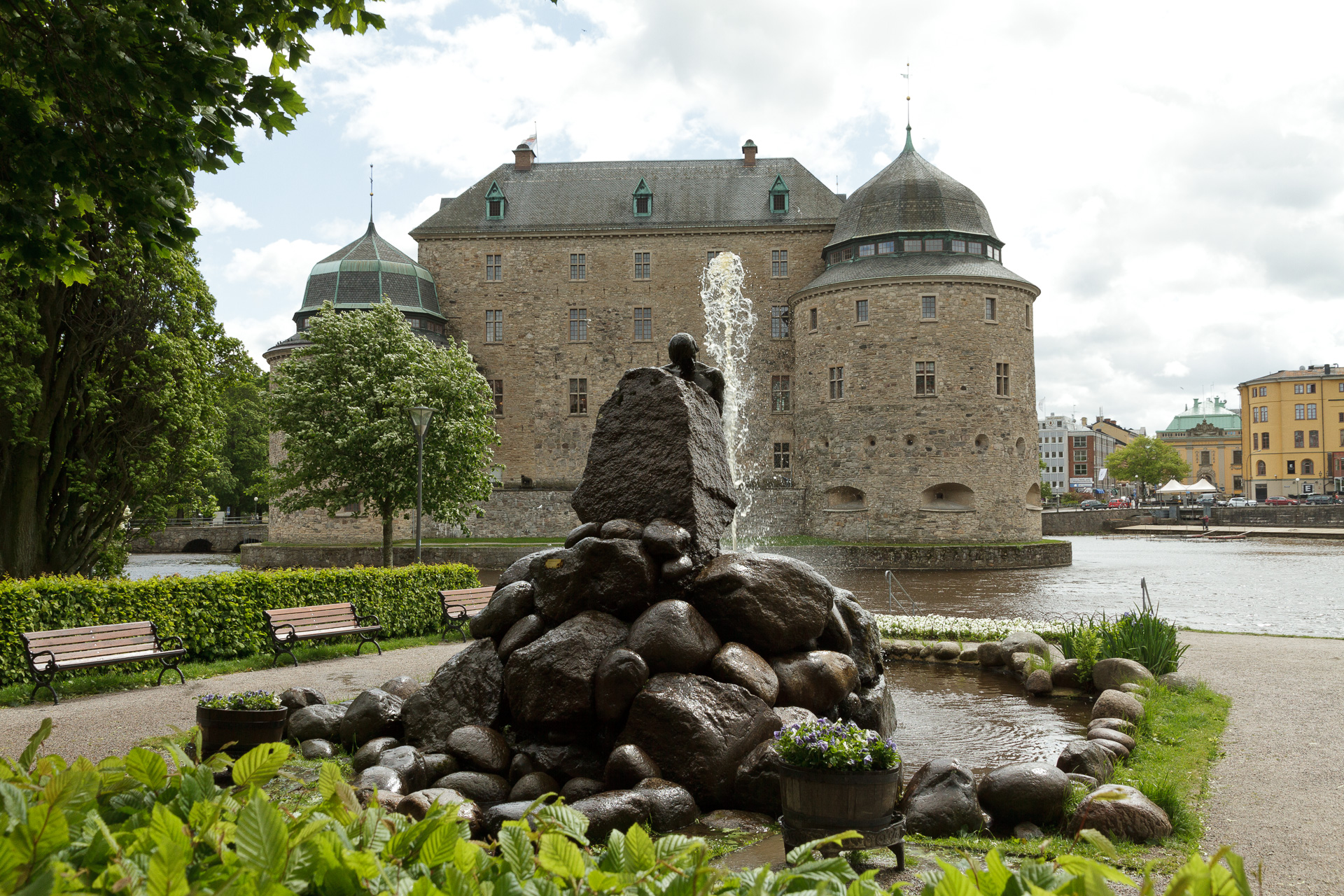Befriaren (The Liberator)
A fountain in the shape of a cairn stands in a small pond surrounded by natural stones. On top of the cairn stands a statue of a naked man who balances a boulder almost as big as himself. From behind, the man's body is sinewy and muscular with a broad back. Supporting the boulder looks like a heavy job. But if you walk around the fountain a quarter of a turn, you will see that the man's face seems untouched by the effort.
With his eyes on passers-by, he takes support against the boulder and takes an almost graceful pose on his toe and with slightly bent knees.

When we are really exerting ourselves, bending and contorting our bodies to endure as much as possible, our postures can easily look ridiculous and our faces distorted. But The Liberator does not look distorted, even though he is lifting a stone that seems impossibly heavy. The pose is graceful, and the facial expression collected. The Swedish Olympic gymnast Axel Janse served as the model for the sculpture and the artist Karl Hultström has emphasized an idealized, manly, muscular body.
The sculpture is one of many examples of male nudes in the public space in which the man appears as active and in motion. This beautifying representation of mankind is typical of the academic tradition Hultström worked in, and the man’s physical exertion seems to be mostly intended as a metaphor. Nature symbolism and emotionally charged motifs were fashionable in art in the early 20th century and the artist may have intended the stone that is being lifted away to serve as a symbol for all the obstacles and difficulties that we strive to overcome.
Viewers of the sculpture may be reminded of the ancient myth of Sisyphus, who was told that he would be freed from the underworld if he rolled a stone to the top of a hill. But every time he neared the top, the weight became overpowering and both he and the stone rolled back down again. This is why we describe a laborious and futile job as Sisyphean.
So, what is The Liberator liberating? Well, the obvious answer is water. Considering that the sculpture was made in the early 1900s in a time when the industrial society was flourishing, the sculpture can be seen as a positively charged symbol for humankind’s, or man’s, ability to dominate and transform the forces of nature. The downsides of this success story, including overexploitation of the Earth, give us completely different visualizations today. It is exciting to see older art from different perspectives, through the eyes of both the past and the present. What do you see?
Konstverk: Befriaren (The Liberator)
Konstnär: Karl Hultström
År: 1914
Material: Bronze and stone
Placering: Henry Allards park
Ägare: Örebro Municipality
Konstverkets position på karta
Publicerad:
Tack för ditt svar!
Berätta gärna vad vi kan göra bättre på den här sidan för att förbättra webbplatsen! Vi har ingen möjlighet att svara, men dina synpunkter är värdefulla för oss. Tänk på att inte skicka in personuppgifter. Om du vill ha svar på en fråga kan du istället använda formuläret ”Lämna en synpunkt”.
Om du ändå skickar in personuppgifter via detta formulär hanteras uppgifterna av Kommunstyrelsen och kan eventuellt lämnas vidare till annan verksamhet inom Örebro kommun i syfte att förbättra vår service.
Här hittar du mer information om hur vi hanterar personuppgifter.
Tack för ditt svar!
Du har nu hjälpt oss att förbättra orebro.se
